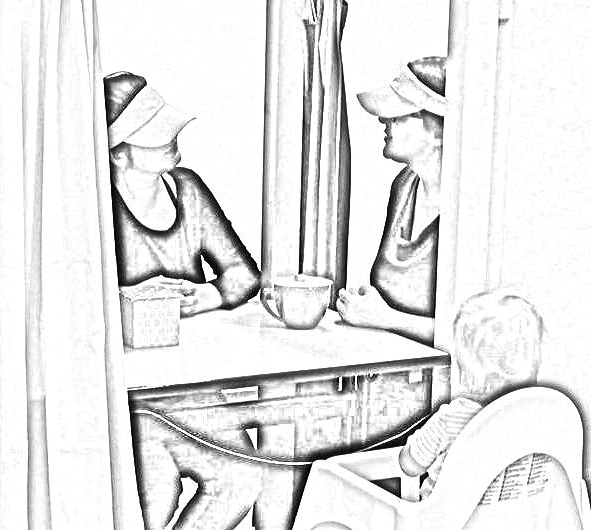Our research question is whether toddlers understand direct and indirect statements as communicative acts that update an actor's false beliefs (updating effect).
Further information about the project
If I put an object (e.g., my book) in a certain place (e.g., desk) and a short time later I want to continue reading my book, I will most likely look for it in the place where I believe it to be because I myself put it there (i.e., the desk). However, if in the meantime the book has been taken off the desk by another person without my knowledge and placed on the nightstand, for example, then I have a false belief regarding the whereabouts of the book (I believe it is on the desk, when in fact it is on the nightstand) and I will therefore probably search unsuccessfully on the desk. However, the other person might anticipate this unsuccessful search and kindly tell me that he or she has put the book somewhere else (i.e., on the nightstand), thus sparing me the search. It would be expected that I would now search for the book directly on the nightstand, thus converting my false beliefs about the book's location into a correct belief (i.e., updating of beliefs). A study by Song, Onishi, Baillargeon, and Fisher (2008) investigated whether even infants have these expectations about actors' actions. In the study, 18-month-old participants saw an actor place a ball in a box, leave the room, and an assistant then moved the ball into a cup. When the actor returned, the assistant said either "The ball is in the cup" (informative condition) or "I like the cup" (noninformative condition). The study showed that only informative -direct- communication led to an updating of children's expectations about the actor's search. However, Schulze & Tomasello (2015) found that infants also understand indirect communication acts, and it seems unclear why the infants in Song et al.'s study did not understand the "non-informative" statement as an indirect cue relevant to the actor's search.
To further interrogate these conflicting results, our project examined 18-month-old children in five conditions: two conditions that attempted to replicate Song and colleague's original study (direct/informative communication and indirect/"non-informative" communication) and three that slightly altered the original procedure (informative communication with pointing gestures and informative and non-informative communication without waiting intervals).
Another part of the project was devoted to the question to what extent the updating of belief attribution induced by communication is actually based on the fact that communicative intentions are exchanged between the protagonists or whether more basal processes (e.g., naming the actual hiding place of the object) are responsible. Therefore, two additional conditions were conducted in this part of the project: In addition to direct/informative communication ("Complete Communication"), in which the assistant tells the main actor the actual location of the sought object ("The ball is in the cup"), one group of children also heard this sentence uttered in the absence of the main actor ("Incomplete Communication"), and for another group of children no utterance was made ("No Communication").
We found that replication of the effect of Song and colleagues (2008) depended on following exactly the procedure described in the original study. More specifically, the effect that direct/informative communication changed children's expectations of the actor's belief-based actions (updating effect) occurred only when the waiting intervals between individual phases of the study described in the original study were followed. However, in this project it was additionally found that indirect communication (referred to as "non-informative" communication in the original study) also influences children's expectations (Schulze and Buttelmann, 2021).
In the second part of the project, we found that the updating effect indeed depended on a child's observation of a social interaction. The updating effect only occurred when assistant and actor were present during the utterance and thus communication intentions could be ascribed. If children heard the updating-invoking sentence in the actor's absence, they had no clear expectations regarding the following search behavior, and if no communication was made at all, they assumed that the actor had a false belief regarding the object's current location and would therefore search unsuccessfully at the original hiding place (Schulze and Buttelmann, 2022).
Related publications:
Schulze, C., & Buttelmann, D. (2021). Small procedural differences matter: Conceptual and direct replication attempts of the communication-intervention effect on infants’ false-belief ascriptions. Cognitive Development, 59, 101054. https://doi.org/10.1016/j.cogdev.2021.101054
Schulze, C., & Buttelmann, D. (2022). Infants differentiate between successful and failed communication in a false-belief context. Infant Behavior and Development, 69, 101770. https://doi.org/10.1016/j.infbeh.2022.101770
